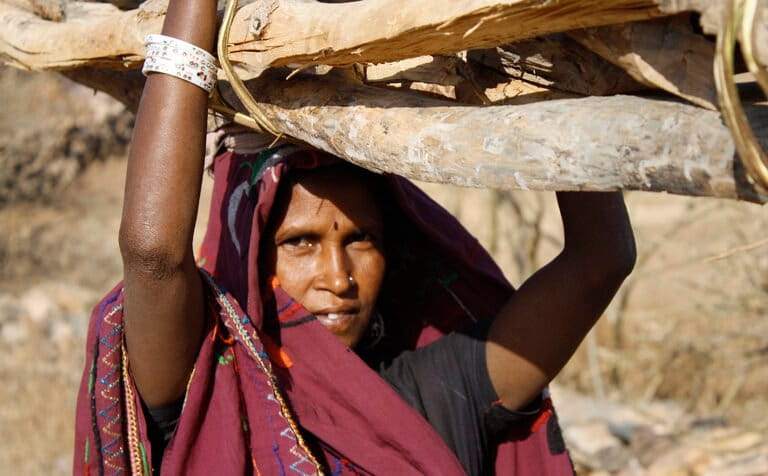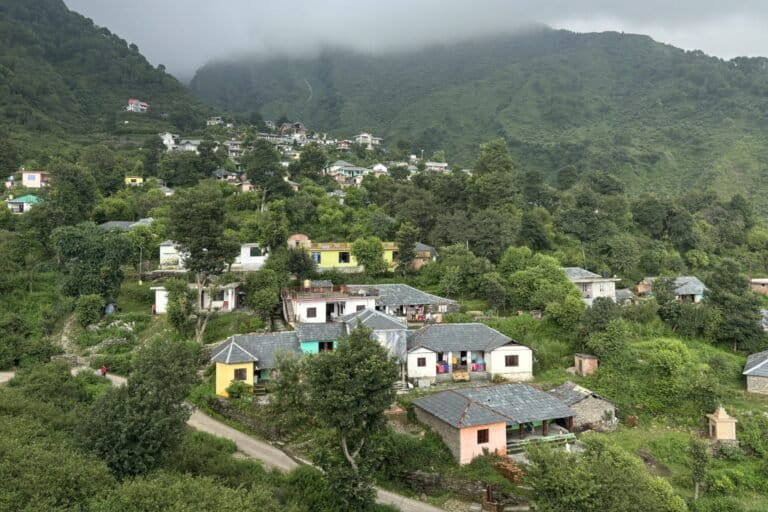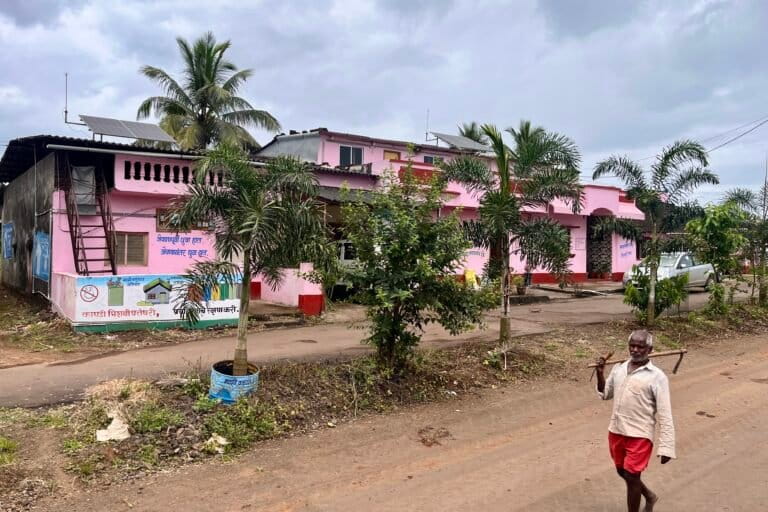- An initiative in Maharashtra is collecting and recycling clay sludge from idols immersed during the Ganesh festival.
- In 2020, the Central Pollution Control Board (CPCB) declared a ban on idols made from Plaster of Paris (POP). It also strictly prohibits the use of toxic and non-biodegradable chemical dyes/oil paints for painting idols.
- In Sindhudurg district of coastal Maharashtra, there are recent efforts to prevent lake pollution and high level of clay sludge deposition, one of the sources of which is immersion of idols in the heritage Dhamapur lake.
Following an effort to encourage a zero-waste celebration of Ganesh Chaturthi, a network of organisations in Pune collected 12 tons of clay sludge from immersed idols this year, that will be recycled for the festivities next year.
Punaravartan, an initiative by environmental organisation eCoexist, works with artisans to reuse the collected clay for making idols while also inspiring those celebrating the festival to consider a more environmentally sustainable approach.
Typically, during the Ganesh festival, popular in many parts of India and particularly in Maharashtra, an idol of Ganesh is worshipped and then, as part of the traditions, immersed in a water body at the end of the festival. As more synthetic materials and chemical paint started being used in the making of the idols and decoration, environmental concerns arose as these were going into rivers, oceans and lakes.
The Punarvartan initiative aims to uphold traditions in a more environmentally conscious way, starting with encouraging people to switch from an artificial material (Plaster Of Parish), that was, up to recent years, a popular option for making idols, to a natural, renewable material (clay). Further, it wants to promote idols made of paper or cow dung and ultimately make a shift to permanent idols and replace the concept of immersion in water bodies with a symbolic immersion, Manisha Sheth, the founder of eCoexist told Mongabay-India.

The project establishes the idea that clay sludge is not a wasteful by-product and thus, it is okay to recycle it. With the ban of Plaster of Paris (PoP) in idol making, idol makers have been forced to consider transitioning to using clay as the raw material for the Ganesha idols, she said. In 2020, the Central Pollution Control Board (CPCB) declared a ban on idols made from Plaster of Paris (POP). It also strictly prohibits the use of toxic and non-biodegradable chemical dyes/oil paints for painting idols.
“Last year, there were people who had kept clay with themselves for the past 2 to 3 years, and they handed it over to us and thanked us for doing this,” she added.
For most people that participate in this project, this is a way to be both environmentally friendly and respectful of their traditions.
Pradnya Ashirwad a professor, whose grandfather and father would make idols used a mixture of clay and paper pulp (recycled paper in particular) to create idols. The use of clay in these idols made them prone to damage, often leaving the artisans with idols that could not be sold. “It was observed that the idols made from Plaster of Paris are durable and also can be made in larger sizes. Whereas, the idols made from clay get cracks or may break easily and therefore idols from clay can be made in small sizes only,” she said.
In 2019, Ashirwad studied water samples in Gorai creek in Mumbai before and after the Ganesh festival to understand the effect of idol immersion on the water quality. The assessment found that PoP immersions have an impact on physico-chemical parameters such as temperature, pH, DO, BOD, COD, chloride, sulphate and turbidity. The study states that “Plaster is a man-made material, easier to mould, lighter and less expensive than clay. However, plaster is nonbiodegradable, and insoluble in water.”
This assessment of water samples also points out that, “The chemical paints used to adorn these plaster idols themselves contain heavy metals like mercury and cadmium and lead, causing water pollution. These metals are bio-accumulative, meaning that once they enter marine life forms like fish; they pass through the food chain and end up in making the fish poisonous to the birds, animals, and people that eat them.”

Despite the harsh effects of PoP on the environment and the CPCB ban on using PoP for idols, there are still some idols that continue to be made using PoP.
“Mostly the resistance is coming from the POP idol makers because the shift to another material is not easy for them. So, the government is trying to incentivize this shift, by providing these artisans with free clay,” said Sheth of eCoexist. The free clay however, is not a sustainable approach says Sheth, given that the idols are to be sold and there is no return for the government and it leads to more unsustainable clay mining. Another concern is that there isn’t enough labour to create these idols, so regardless of the amount of free clay that is being provided, there aren’t enough people who are willing to spend 8-10 hours of their day sculpting Ganesha idols, considering that clay takes longer to mold into idols compared to synthetic material.
Another challenge is the contamination of clay. The clay sludge is collected from homes, municipal corporation collection centers and the river banks where the idols are immersed. Artisans are hesitant to use the clay from public immersion sites as they are mixed with other ornamental decorations and are not very clean. To clean the clay, they must either soak it and wait for the waste material to float up and remove it or grind the clay into a fine powder, both proving to be a tedious task for the artisans. The artisans are willing to use recycled clay only if it has been processed into a powder form but powdering this clay requires an industrial pulverizer if it is to be done at a large scale.
Efforts in coastal Maharashtra
Post the positive response from the previous year, the organisation’s efforts in other cities have flourished. One such instance is that of Dhamapur in Sindhudurg district in coastal Maharashtra. Punaravartan in collaboration with the University of Life has taken up the issues of deterioration of water quality in Dhamapur lake, specifically due to annual idol immersions. Dhamapur lake is the first lake in the state of Maharashtra to be recognised as a World Heritage Irrigation Structure (WHIS). For two consecutive years, there have been reports of dead fish floating in the lake during the months from March to May.
Dhamapur lake borders Maharashtra and Goa, wedged between the Arabian Sea and the Western Ghats and surrounded by dense forests. Dhamapur lake stands apart from other lakes in the Sindhudurg district as a result of its long-traced history. Built in the 1530s, Dhamapur lake survived even the 1970s droughts in Maharashtra. The lake has sustained generations as a reliable drinking and irrigation water source.

Educationist Sachin Desai from Syamantak Trust’s University of Life, a centre for experiential leaning, suggests that the rising issues in the lake are a recent development in the history of the lake.
Annually, around 300 Ganesha idols are immersed in the Dhamapur lake, based on an estimation by the university. In the 1860s, the lake was recorded to have been around 55 feet, however, today it stands no more than 15-20 feet deep and one of the reasons is predicted to be clay sludge deposition.
In 2021, a petition was filed by Syamantak Trust in the National Green Tribunal to address the poor water quality of Dhamapur lake. The proposed plan was to create a reed bed around the lake, which would filter out the waste. This, unfortunately, was said to be not feasible. Instead, an immersion tank was built by the lake for idol immersion. The tank was dependent on the lake water level rising and falling, to get filled and the lake level itself relied on rainfall. As the water level of the lake increases, the tank gets filled up and with the water level reduction, the tank gets emptied out, leaving the clay sludge behind.
However, this dependence on the lake water level and the rainfall became a challenge. With lower rainfall in Maharashtra this year, the fear of these immersion tanks not being filled up was a major concern, but thankfully rains around the days of the immersion filled up the tank. However, this puts forth the question of whether the concerned authorities might pump water into the tanks or find an alternate solution. The lack of a clear plan of action for when the situation of not enough rainfall arises is a worry for the immersion tank’s effectiveness.
A few suggestions on what can be done in addition to the immersions tank solution have been voiced by the University of Life team; one included getting the authorities in charge to auction off the clay collected in the artificial immersion tanks, making it an alternate source of revenue for the gram panchayats. The other is to create a uniform branding for all these eco-friendly idols to further legitimise them in the public eye.
Banner image: Ganesha idol immersion at the newly built immersion tank at the Dhamapur lake. Photo by University of Life.













